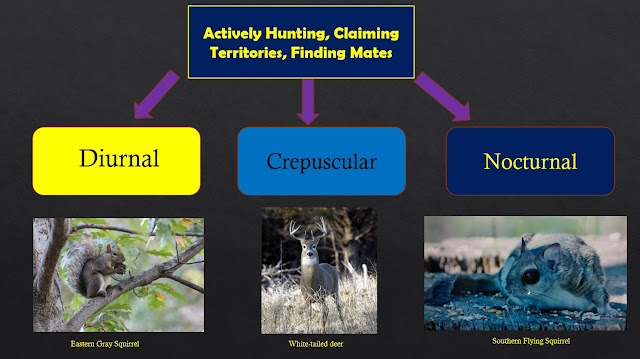Natural Notes: Animals of the Night

Are you a night owl? If you're an Illinois wildlife species, than chances are, yes! However, many animals besides owls are active at night. In fact, the majority of wildlife species in Illinois are hunting, gathering mates, establishing territories, and moving about during the nighttime hours! A daytime walk on a trail through a forest preserve might yield some common wildlife sightings such as gray squirrels ( Sciurus carolinensis ) or sparrows. Most animals that people see around Illinois are active during the day, or diurnal. Humans are a great example of a diurnal animal. Other animals though are most active active at different times of the day (figure 1). Late in the afternoon or early in the day, many folks encounter white-tailed deer ( Odocoileus virginianus ). Deer are a great example of a wildlife species that is crepuscular , or active at dawn or dusk. Figure 1: In Illinois, most wildlife species are more act...








